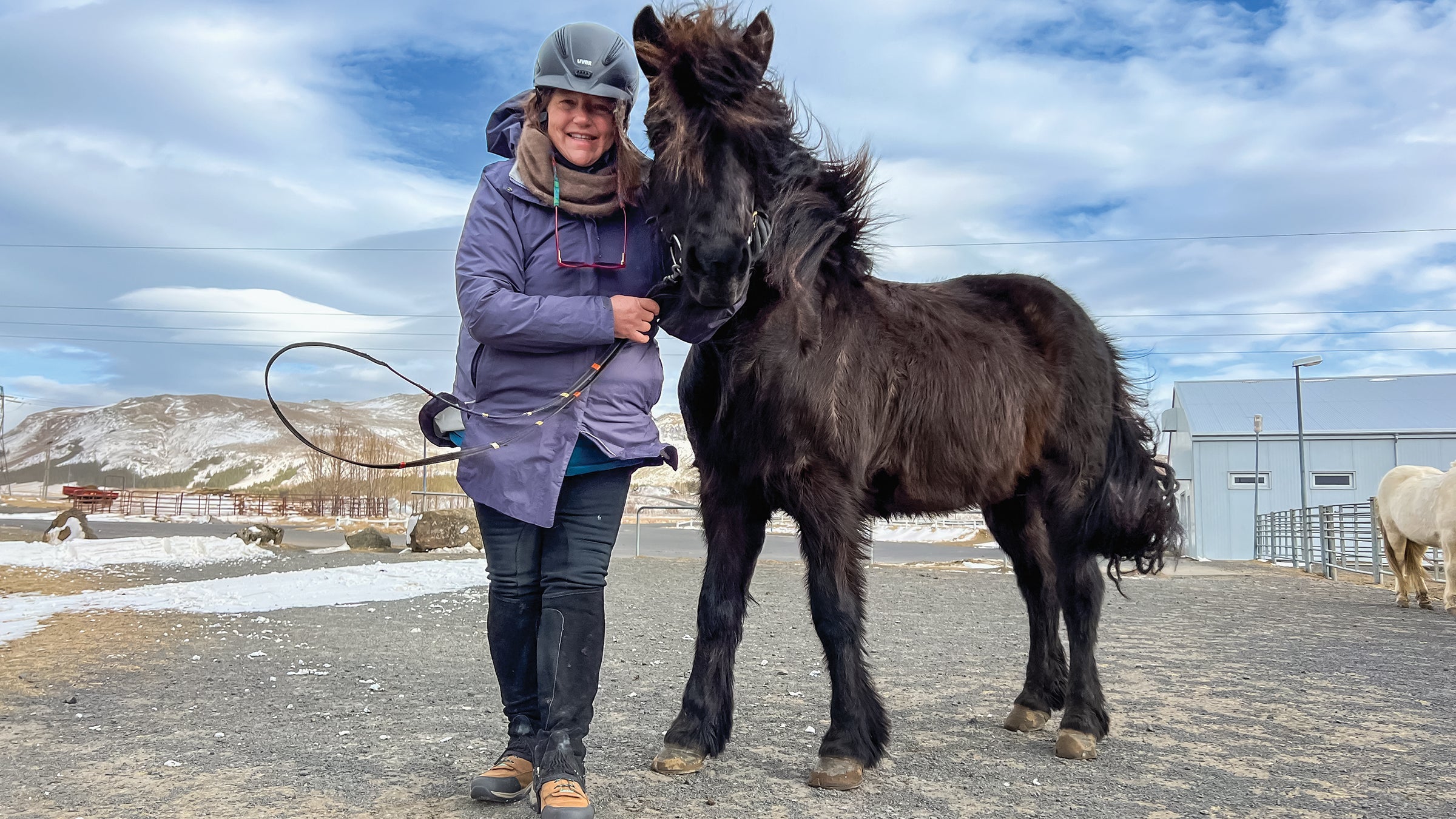My Health and Wellness Plan? Icelandic Horses.
Serious illness gave our writer an urgent need for physical and spiritual rebirth. She found both by bonding with a unique riding breed that seems touched by Viking spirit.
Heading out the door? Read this article on the Outside app available now on iOS devices for members! Download the app.
In Hveragerdi, Iceland, there are no cemeteries, because there is so much hydrothermal energy in the ground that the bodies would boil. They also grow a lot of cherry tomatoes here, in geothermally heated greenhouses that glow a warm amber on the hillsides in the cold, dark January mornings when we first ride out with the horses. Icelanders are very proud of their hothouse produce, grown in this valley, which sits an hour south and west of Reykjavík and gets significantly (and relatively) more sun. The lettuce and tomatoes are specially labeled on menus and in grocery stores with the Icelandic flag, and are, in fact, delicious.
This morning is the third day of gale warnings in a row, the wind a steady 45 miles per hour, occasionally gusting to 60. (In Iceland, they measure the wind by meters per second. Those numbers in translation—20.1, gusting to 26.8—don’t sound as bad.) The horses stood in this wind all night, and in the accompanying sleet, snow, and rain that churned up out of the ocean one atmospheric wave at a time. But now they are here, underneath us, giving us their all, their strength, their courage, their loyalty—and we lower our heads against the wind and sleet, riding across refrozen streets toward the mountain.
The horses are wearing metal shoes with studs, to keep them from slipping on the ice. It seems like magic that they do not slide or trip or fall and break us and themselves, especially considering how many of us got blown backwards across the parking-lot ice just trying to walk from the guesthouse to the barn.
Anna, our German guide, tall, strong, magnificently beautiful in her muck boots and men’s overalls, her thick blond hair tied in a mane-ish knot atop her head, is the horse girl we all wish we’d had the courage to be. She gathers us, says yes, that in spite of the gale and the worsening prediction (50 mph, gusting to 75), we need to saddle up and get ready to go.
My acupuncturist told me my kidney pulses were as weak as she’d ever felt on someone who was not in the hospital actively dying. She sent me home to find a reason to live and I chose Icelandic horses.
The nine other women who signed up for this week are German, six twentysomething students of competitive dressage, one lady cop from Berlin who’s closer to 40, and two old friends who might be approaching my age (61) and who ride together in a different country every year. There is no hesitation, there’s not even any eye contact; we grab our saddles and headstalls and hoof picks and curry combs and go to look for our horses in the dark.
Today I’m riding Salka, a mare who was at one time a five-gait equitation champion in the show ring. She is bossy and brave, as fierce and finely tuned a horse as I have ever had the pleasure to ride. I am at school, and she is the teacher, which suits me perfectly. My jobs are to keep my seat calm and quiet, my hands a little higher than I am used to, and ask with my legs again for the tölt, the four-beated gait for which Icelandics are famous. When I can feel her gait becoming a little pacey, I have to deliver a series of quick half halts—none long enough to start a fight, which she will win—every time she threatens to run away.
An hour into the ride, I am covered in ice that has been falling from the sky so thickly that when I bend my arms, I can hear my sleeves cracking. My helmet is completely ice-encrusted and weighs an extra couple pounds. I have to squint my eyes almost to closing, because they can’t handle the needles of sleet that keep coming. If there were going to be any sun today, it would be rising right about now.
No matter the weather, Salka doesn’t miss a stride, would gallop off into forever if I let her. At one point, on a moderately icy gravel straightaway, Anna calls over her shoulder, “It’s time for speed!” As the horses in front of me break into a gallop, there is nothing for it but to close my eyes, grip with my thighs, and trust the studded horseshoes and Salka’s true heart. After the ride, Anna looks us over, says she likes the way I am able to bring Salka back down after a long run, and the outside temperature becomes irrelevant because my whole body warms electrically with pride.




